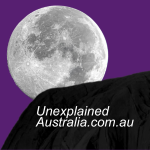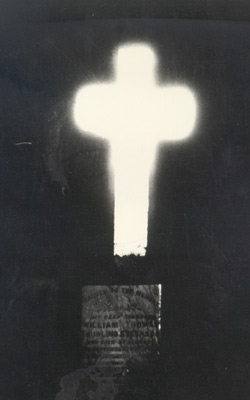What are these mysterious outback lights?
by Murray Byfield
All around the world “ghost lights” have been seen by thousands of people e.g. will-o’ the-wisp, jack o’ lanterns, and fairy lights. Australia also has its share of stories of strange luminous objects that hover just above the ground. But the most famous is the Min Min Lights…
Named after a very small settlement which included a Pub, mail-exchange and small cemetery which used to stand on the boundary of two big stations – Warenda and Lucknow 100km east the town of Boulia in Southwest Queensland. The pub burnt to the ground in the 1800’s and very little of the original small settlement exits. The first documented sighting of the Min Min lights occurred in the “Sunday Mail Magazine” of March 2, 1941, although reports go back much further in time some sixty years earlier.
At about 10 pm, as the stockman passed the Min Min locality a strange glow appeared right in the middle of the little cemetery located at the rear of the old hotel. The glow appeared to grow to the size of a small watermelon, hover over the graveyard, and then move off in the same direction the stockman was traveling. Terrified, the man galloped towards Boulia with the light allegedly following him all the way, until he reached the outskirts of town.
Description:
It is usually one light, sometimes double, sometimes several, and sometimes seen as hundreds of little lights. It is generally reported as white, but has been seen as orange, red, green and blue. It may appear for a few minutes or may hang around for hours. It may be stationary or may travel at the speed or a car. It is usually about a metre above the ground, at fence height, and it may jump or travel along fences.
It has been reported high in the sky, at times oscillating up and down like a yo-yo. A frequent feature is that, unlike a headlight, it lights its surrounds on all sides. It appears to be a curious, friendly light, often approaching but never threatening, although at times causing panic in the minds of the beholders.
The most frequent sightings (36) occur between 1950 and 1959, with only 12 between 1940 – 49 and 16 in the following decade.
Some possible explanations are:
* The ULO is a UFO (-although this is hardly an advance in understanding. Incidentally, the light was reported long before the era of flying saucer invasions).
* The ULO is burning gas, methane, marsh gas; an indigenous “Will-o’-the-wisp”.
* The light is emitted from a condensation of luminescent, perhaps radioactive gas, e.g. radon escaping from the artesian aquifer.
* “Light reflection, light refraction, inversion layers” – light originating at a distance appearing to be close by.
* Luminescent insects (genus and species unknown) in a ball of breeding frenzy.
* Spirit(s) of the departed, returning to warn and give guidance.
* Fireballs, electrical disturbances, meteors or meteorites.
* A disturbance of observation initiated by suggestion and prior description and on occasions enhanced by tiredness and alcohol.
Prof Jack Pettigrew believes that the Min Min Light is caused by point four. “Light reflection, light refraction, inversion layers” but this does not account for the fact that people have thrown things at the lights, fired shot guns at it only to have it disappear in front of their eyes. Also, it does not explain accounts of people as in the above example who were chased by the light. Or stories of children who chased the lights across paddocks in their bare feet.
The Min Min lights have been associated with UFO’s but the appearance and behaviour of the lights has little in common with the
usual UFO sighting.

